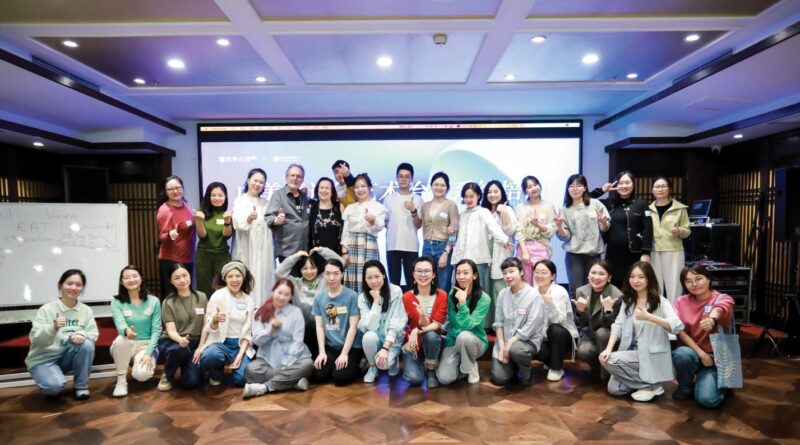Current Issue
Foreword
For this edition of the journal, we put a call for papers for authors to submit their work on constructive dialogue, diplomacy, safe coexistence, harmonious futures, and arts-based approaches in order to understand and work on how we can ease individual and collective suffering and trauma. We wanted to generate thoughtful and caring dialogues through our practices, research, and teaching in response to the painful realities of war and conflict. We particularly wanted to offer an opportunity for artistic and creative work to come together in this edition to represent how we can produce the brightest of lights when so many of us find ourselves in such complex existence and to offer a reprieve and moment of alleviation. Read more
Photo Essay: Intimate Representations of Displacement
Authors: Michal Lev
This photo essay is a poignant collection of artistic expressions that reflect the emotional impact of displacement in the context of World War III. Through a series of impressionistic paintings and poetic representations, the author invites readers to witness the resilience and defiance found in artistic expression during turbulent times. The essay captures a contemplative journey over the past nine months, shedding light on the quiet, intimate moments amidst chaos and turmoil. Each painting and portrayal in this collection offers a glimpse into the emotional response to global crises, weaving together darkness and glimmers of hope. As viewers immerse themselves in this evocative essay, they are prompted to reflect on the power of art as a form of resilience in the face of adversity. Read more
Change Process Research in Music Therapy: Introducing a Transdisciplinary Framework
Author: Lorenzo Antichi, Rebecca Zarate, Marco Giannini
Music therapy is conceptualized as a systematic process of interventions and shared experiences that promote change in individualized health and wellbeing contexts. Change processes are crucial in music therapy, but little is known about certain factors, mediators, and mechanisms that cause or lead toward such change processes. There is a strong need for developments of theoretical and methodological frameworks of change in music therapy to achieve this goal. The current body of knowledge shows a lack of research on this topic, particularly on how to strategize and study change, how to understand research design and statistical analysis of change, and how to support and strengthen what is known today about change processes in music therapy. This article is grounded in theories that address complex interventions that cause a change in music and creative arts therapies as a means of guiding a dialogue about the potential for influencing research strategies and methods that investigate change processes. The review of the literature shows that although new studies about the efficacy of music therapy have been made in recent years, literature is extremely limited about predictors, moderators, shapes of change, stages of changes, processes, and mechanisms of change. There is strong evidence that music therapy works. However, it is not entirely known how, when, and why music therapy produces a change. Based on the findings in the current body of knowledge, further studies are needed to investigate every aspect of change with a pluralistic and interdisciplinary approach, which integrates methods from across the natural sciences, mathematics, arts, behavioral, and social sciences. This article introduces a framework addressing these issues, attempts to bridge current gaps in knowledge, expand capacity in the field of music therapy research, and equip clinicians, researchers, and professionals with tools and knowledge on change process research. Read more
Studio Art Therapy Learning Ecology: Crossing Borders between Art, Education, Health, and Therapy
Authors: Kathryn Grushka
Studio Art Therapy is a unique learning ecology with border crossings between visual arts therapies and art studio practice, education, and health. The increased fluidity between research and practice spaces, art therapy, and arts health are elaborated as a concept, theorized with the western Deleuzoguattarian philosophy. Connections and differentiations between art making and art as therapy are revealed in a discussion of an empirical research project Art, Visual Narrative, and Wellbeing Project (AVNAW). Studio art therapy focuses on body, meaning, and healing. It speaks to the value of people making art, reflecting and talking about their making processes alone and together through an autoethnographic visual narrative approach to artmaking. The paper asks how studio visual artmaking can activate individual productive desire to adapt toward becoming well through artmaking. Care, community, belonging, and resilience are core to a studio art therapy learning ecology that responds to real-life experiences in the support of personal care and wellbeing. Read more
The Art of Planting Rice as a Meditative Practice: Sensemaking and Equanimity about Societal Disruption through Performance Art
Authors: I Made Jodog, Jem Bendell
The impact of COVID-19 on Bali, Indonesia, decimated a significant part of the economy, resulting in unemployment and underemployment, which increased economic difficulties and related anxiety. Many people returned to small-holder farming to sustain their families. Away from farming, meditation is widely recognized as a means for equanimity and coping better with anxiety. In solidarity with the return to farming in Bali, the lead author of this paper created a performance art experience involving the planting of rice as a meditative practice. This paper summarizes the process and what was learned during the experience, using elements of qualitative research. The analysis affirms the role of artistic expression in supporting people’s sensemaking about societal disruption, with implications for social learning and mental well-being. Read more
Mural Painting and Inclusive Research in Cameroon: Implementation and Impact at the University of Bamenda Campus
Author: Paul Ngong Animbom
This paper describes the use of mural-making as part of the knowledge mobilization activities of an international research partnership project. The mural depicts the technical and academic activities of people with disabilities in a university setting as meaningful action in inclusive research processes. The main objective of this 30-meter mural painting on a wall in the University of Bamenda was to demonstrate that inclusive research could encourage the inclusion and participation of people with disabilities in all areas of academic and professional activities of the university. A mural-making protocol was developed by the faculty and implemented by the team. It included the collection, analysis, and understanding of data on inclusion; design of drawings and the mural; wall preparation; plotting; and execution of the actual mural. The brightly colored mural now draws attention to inclusion, provides a vision of hopefulness, and complements the narrative character of inclusive education and research on campus. Read more
Embracing the Kahankar and the Ahankar: A Reflexive Inquiry into Body, Movement, and Consciousness, Interwoven with the Warli Philosophy
Author: Devika Mehta Kadam
This article aims to deepen the understanding of existential intrasubjectivity and intersubjectivity as they relate to the body, being, and nature, as experienced through the lens of Warli philosophy, particularly the Kahankar and the Ahankar. This reflexive inquiry lies at the intersection of the author’s identity as a researcher, a dance movement therapist, and a spiritual being. The contemplation includes experiencing Nature as a witness, another facet of the Warli conviction of the profound interconnectedness with the natural world, recognizing our inherent composition as part of nature. Another dimension of engaging with this philosophy is through the practice of Authentic Movement, where the imagination, the psyche, and the soul all dance together as they are witnessed nonjudgmentally. I employed an external witness as well as used self-witnessing in the form of an “inner witness.” Lastly, it explores the dance between the body as the storyteller and the consciousness as the affirmer of the spoken word, the truth. Read more
Cultural Appropriateness, Arts-based Care and Well-Being in Sensitive Research
Authors: Ying (Ingrid) Wang
This article explores the nexus of cultural appropriateness, arts-based care, and well-being in sensitive research on sexual violence, with a focus on New Zealand’s Asian community. Drawing on the author’s background as an Asian immigrant arts-based researcher, this study underscores the pivotal role of care, both culturally and through arts-based approaches, in facilitating understanding and expression. Emphasizing the importance of caring for both research participants and the researcher’s own well-being, the article advocates for culturally sensitive practices throughout the research process. It demonstrates how arts-based research methods enable creative expression and deeper cultural comprehension, enhancing care provision for participants. Moreover, the article highlights the need for culturally sensitive self-care strategies for researchers, acknowledging the emotional toll of engaging with sensitive topics. Ultimately, it calls for a more compassionate, culturally attuned, and ethically grounded approach to sensitive research within diverse cultural contexts. Read more
The Lexicon of Pain: Highlighting the Advantages of Applied Theater in Pediatrics through the Lens of Psychodynamic Therapy
Author: Persephone Sextou, Stelios Kiosses
Applied theater for health and well-being suggests itself as an effective tool for social and emotional interaction and communication of emotions, developing creativity, imagination, and regulation of emotions during hospitalization. This paper aims to explore the value of communicating emotions through applied theater and storytelling in pediatrics and its potential in clinical practice in a discussion through the lens of psychodynamic therapy. We will explore the intersections, synergies, and possible collaborations between the theatrical form as a condition for openness and verbalizing pain and therapy as a method of processing and dealing with emotions. We discuss fictional stories told by children during applied theater and storytelling research interventions in hospitals as case studies through the lens of psychodynamic therapy with children. We explore these stories by using interdisciplinary, synthetic, and dialectic analysis between the researcher-artist and the psychodynamic therapist. We ask if the stories that hospitalized children create within theatrical interventions can help adults and clinical staff understand better the children’s lexicon of pain, leading to sensitive healthcare. The rich narrative discussion of the case studies indicates that applied theater in hospitals enhanced well-being support in children and as gateways for improved care. The core themes that emerged include empowerment, synergies and exchanges of emotions, emotional reassurance, and imagination. This analysis of hospitalized children’s stories from a psychodynamic therapist’s point of view has scope for informing alternative, nonmedical activities with children in the hospital and those who would benefit from clinical therapy and the performing arts. Read more
Navigating Resilience: Developing The MAP Framework for Supporting Children Through Familial Adversity in Hong Kong
Author: Kit Ping Wong, Siu Yan Frances Leung, Lai Yin Galie Chow
Formulating interventions when working with children from a wide age range who have experienced familial adversity with diverse developmental needs present significant challenges that warrant investigation. The MAP framework, which was established by a support service in Hong Kong, encompasses guidelines for both therapeutic goals and strategies to facilitate focus and clarity in the therapeutic work based on literature review, critical reflection, and feedback from participants. As therapeutic goals, M stands for mindful awareness and management of emotions, A denotes attachment building, and P refers to positive self-worth. In working toward intervention strategies, M represents mindfulness practice, and A and P refer to art and play mediums, respectively. Case examples are included to illustrate the application of the model. Read more
Art Encircles Life: Journeying With, In, and Through the Expressive Arts
Author: Vivien Speiser, Phillip Speiser
This article presents the work of two expressive arts therapists who traveled and taught around the world between February and April 2024. Our journey actually started on October 7, 2023, when we were supposed to start teaching in Israel, and instead found ourselves waking up into the barbaric outbreak of this new Israeli–Hamas war. Since that time and in the aftermath of a world forever marked by this tragedy and its aftermath, we have been searching for ways of being of service and engaging in and amplifying our understanding of the ways in which the arts contribute toward healing and the building of resilience in times of conflict, war, and disaster. During our journey, we teach in established creative and expressive arts therapy training programs in South Africa and India as well as teach in burgeoning and newly developing programs in Zambia and China. Wherever we go we are surrounded by the arts and arts practices and learn again about the lifesaving universality and importance of artistic expression. Read more
Recent Issues
Call for Submission
CAET Summer Edition 2025 (11.1) call-for-paper. The deadline for the submission is March 1, 2025. We look forward to your contributions. Hoping in hope that all contributions to this journal may support us all in times of angst, fear, rage and confusion.
News and Events
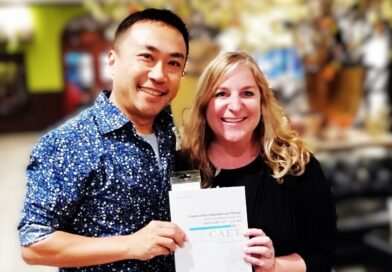
Invitation to Join CAET Review Board
Dear colleagues, We are reaching out to invite you to join the review board of Creative Arts in Education and
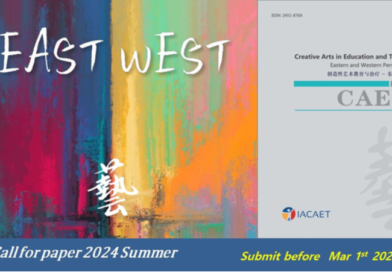
CAET Summer Issue 2024 Online
We are pleased to announce CAET Summer issue (10.1) is published online now. These 10 articles cover a various field
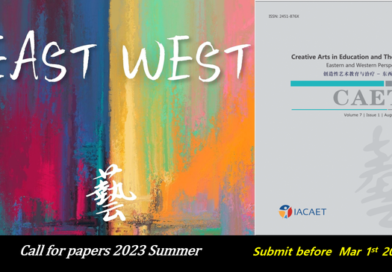
Pre-announcement of CAET Summer Issue 2023
The summer 2023 issue of the CAET Journal offers a focus on the power of the arts in the social

CAET is recruiting Editorial Assistants
Creative Arts in Education and Therapy (CAET) – Eastern and Western Perspectives is an international open access journal and the
Blog
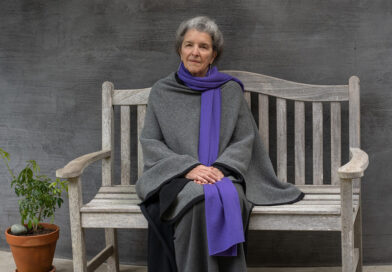
A Tribute to Janet Adler (1941 – 2023) by Helen Payne
Photo © Jens Wazel A Tribute to Janet Adler(1941 – 2023) I am excited to hear Janet has agreed to
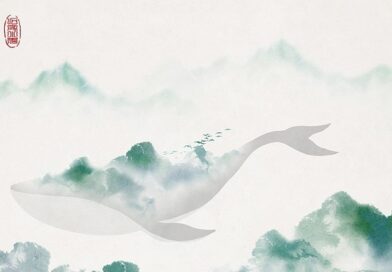
Western Educators, Chinese Students: How Shall We Meet? by Tony Yu Zhou
Panel discussion at Dance Therapy Summit of World Arts & Emodiment Forum (WAEF 2023) It all started 20 years ago
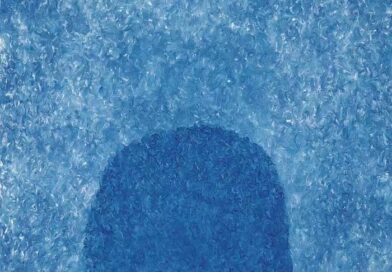
Activating and Awakening Life with “Desire Finger”
I am an artist, and my love for art comes from me feeling the supportive effect of art on the
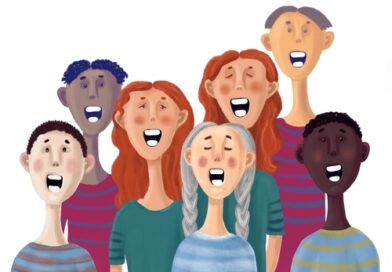
Singing, wellbeing and health by Stephen Clift
The idea that group singing is good for wellbeing and health goes back to at least the late 16th century.
Authors

Akihito SuzukiKeio UniversityJapan

Donna DodsonBrandeis UniversityUnited States

Liz CameronDeakin UniversityAustralia



